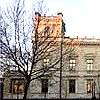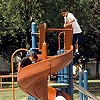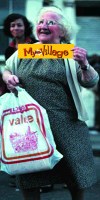|
With discussions on the future of Notting Hill Carnival
now focusing on four possible route change options, the Royal Borough
has published five route change rules against which those options
can be judged.
the new rules are
the four possible routes are
Any new route should:
Be safer than the traditional route.
The Council believes that this means Carnival goers who only want
to stand and watch have room to do so in safety. Crowds must be
able to disperse rapidly in case of an emergency and there should
be a firm 9pm finish.
Accommodate the traditions of Notting Hill Carnival,
and be acceptable to the Carnival community. It should provide
an improved 'platform' for the Carnival arts and provide for their
practical needs. The route should not be too exhausting for children
and others taking part.
Acknowledge the needs of all Londoners, as well
as the Carnival community and audience. This means it should
have regard to local communities, and not be imposed upon them -
there must be public consultation. It should not compromise public
transport provision elsewhere in London or cause unacceptable displacement
of traffic in west London.
Fit within the operational capacity of London's
public services. The route should not compromise emergency planning
in west and central London, either in terms of the diversion of
human resources, or in terms of the closure of transport routes
upon which the emergency services rely. It should be capable of
being policed and stewarded and not over-stretch the capacity of
the local authorities to provide reasonable standards of amenity
and enforcement action against illegal trading and unlicensed sound
systems.
Be practical and realistic. It should be
evolutionary, not revolutionary; take account of local topography,
particularly gradients; keep the number of junctions to a minimum
and facilitate media coverage.
The four route change options currently on the
table are based on evidence from crowd management and safety experts,
Intelligent Space. The options were unveiled last week following
lengthy discussion and a weekend conference involving the GLA, the
Royal Borough, Notting Hill Carnival Trust, the Met Police, Westminster
City Council and The Royal Parks.
The four route options are:
East West 'L': The procession could move in either direction.
It would start on Ladbroke Grove at the junction with Harrow Road,
and then turn into either Arundel Gardens and Kensington Park Road
before entering Westbourne Grove, or move directly along Ladbroke
Gardens into Westbourne Grove.
The procession would then continue along Westbourne
Grove and Bishops Bridge Road to the junction with Eastbourne Terrace,
possibly turning into Eastbourne Terrace.
The Chair: The procession could start on
Ladbroke Grove, at the junction with Kensal Road and continue along
Ladbroke Grove to the junction with Holland Park Avenue.
The procession would then go along Holland Park
Avenue, Notting Hill Gate and Bayswater Road up to Lancaster Gate
tube. The Park: With this option, the procession could move in either
direction. The procession could start on Ladbroke Grove at the junction
with Harrow Road, and continue along Ladbroke Grove before turning
into Ladbroke Gardens.
The procession would then move along Westbourne
Grove and Bishops Bridge Road to the junction with Westbourne Terrace.
The procession would then extend along Westbourne Terrace towards
Lancaster Gate tube.
Merging horseshoe: This route would offer
vehicles two alternative starting points: the first would be on
Ladbroke Grove at the junction with Harrow Road, turning into Arundel
Gardens and then Westbourne Grove.
Starting point two would be on Great Western Road
at the junction with Hormead Road, following Great Western Road
to junction with Westbourne Park Road, then turning right into Chepstow
Road.
The two routes would converge at the junction of
Westbourne Grove and Chepstow Road, then follow Westbourne Grove
along to Bishops Bridge Road, turning right into either Westbourne
Terrace or Gloucester Terrace. The procession would then turn right
into Bayswater Road, and continue along Notting Hill Gate, allowing
gradual dispersal along Holland Park Avenue.
for more info check out the Royal Borough website www.rbkc.gov.uk/
|


